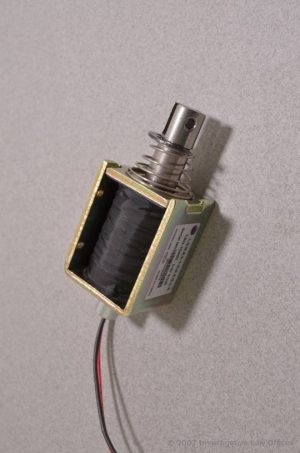Safe Designs That Use Solenoids Are Not Secure
Many safe manufacturers utilize solenoids to accomplish locking and prevention of the bolt works from moving. Typically a keypad or biometric authentication such as fingerprint is utilized to trigger the solenoid and retract the locking pin.
A solenoid is actually a coil with a ferrous pin in the center. When the coil is energized with a voltage, the pin will retract. The problem with using solenoids as the primary locking system is that they can be vibrated to the open position, often quite easily. This was the case with the Stack-On safe that was the subject of a Class Action lawsuit by Tobias and Drury in 2012, and also the subject of the Def Con lecture in 2012.
Security Laboratories was retained by Ed Owens, the father of the three-year-old victim, to determine why the safe could be opened by jiggling. We utilized a high speed camera to photograph the actual movement of the pin in the lock position.
This was also part of the problem with the Sentry fire safe that we analyzed in Vancouver, Washington. In that case, we were able to retract the magnetic pin from outside of the safe and allow it to open.
Watch the video within the Stack-On safe.

